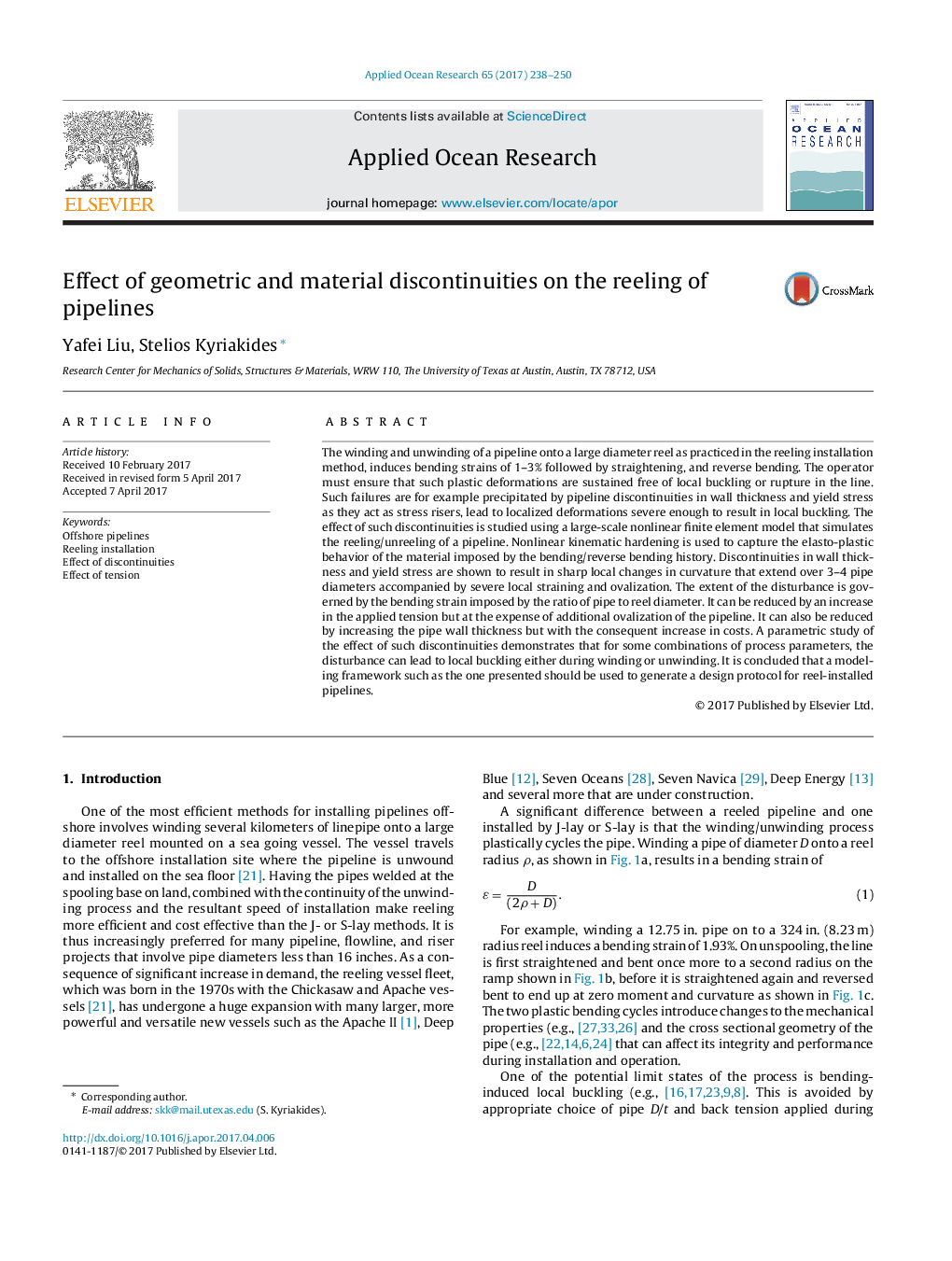| Article ID | Journal | Published Year | Pages | File Type |
|---|---|---|---|---|
| 5473314 | Applied Ocean Research | 2017 | 13 Pages |
Abstract
The winding and unwinding of a pipeline onto a large diameter reel as practiced in the reeling installation method, induces bending strains of 1-3% followed by straightening, and reverse bending. The operator must ensure that such plastic deformations are sustained free of local buckling or rupture in the line. Such failures are for example precipitated by pipeline discontinuities in wall thickness and yield stress as they act as stress risers, lead to localized deformations severe enough to result in local buckling. The effect of such discontinuities is studied using a large-scale nonlinear finite element model that simulates the reeling/unreeling of a pipeline. Nonlinear kinematic hardening is used to capture the elasto-plastic behavior of the material imposed by the bending/reverse bending history. Discontinuities in wall thickness and yield stress are shown to result in sharp local changes in curvature that extend over 3-4 pipe diameters accompanied by severe local straining and ovalization. The extent of the disturbance is governed by the bending strain imposed by the ratio of pipe to reel diameter. It can be reduced by an increase in the applied tension but at the expense of additional ovalization of the pipeline. It can also be reduced by increasing the pipe wall thickness but with the consequent increase in costs. A parametric study of the effect of such discontinuities demonstrates that for some combinations of process parameters, the disturbance can lead to local buckling either during winding or unwinding. It is concluded that a modeling framework such as the one presented should be used to generate a design protocol for reel-installed pipelines.
Keywords
Related Topics
Physical Sciences and Engineering
Engineering
Ocean Engineering
Authors
Yafei Liu, Stelios Kyriakides,
